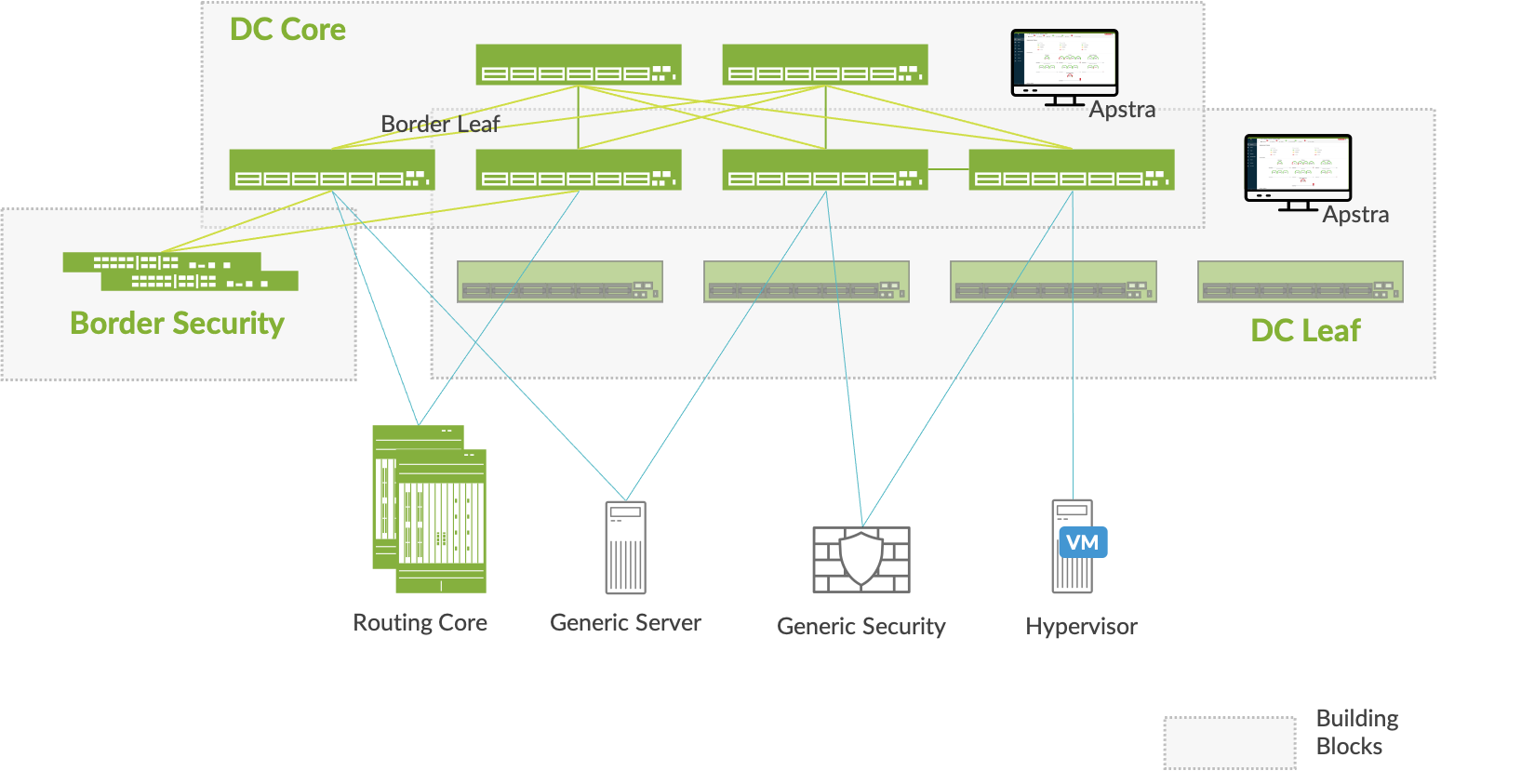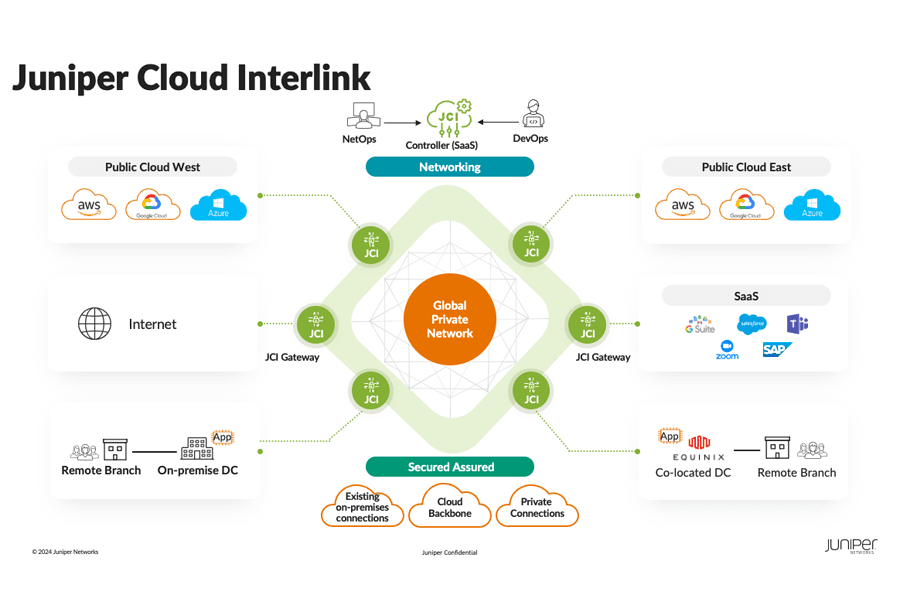The rate of complexity in the data center is up. The rate of change in networking is up. How can network operators keep up?
Networking teams need fresh answers to the questions of how to operate their data center networks. They need answers that go beyond the command line and the vendor certifications required to demonstrate proficiency. They need answers that do far more than simply use machines to mimic the repeated data entry of old and tired operations methods.
The future of networking—and really, the present—is about leveraging software to change how we think about operations. It’s about finding a better way to automate the setup of the network and help save time every day, thereafter. This includes the additions and changes essential to today’s digital business, the monitoring and repair required for reliable operations, the patches and upgrades that protect the data center from risks and even the tracking and auditing of everything as it’s happening.
Juniper Networks has a different answer to this complex challenge – the best answer: our recently acquired Apstra software for intent-based networking. Juniper Apstra automates the setup of data center networks across different vendors and environments and then, most importantly, assures that it operates as the customer wants and eases how they identify and resolve issues and make changes.
Since the acquisition, enterprise, service provider and cloud operator customers have found that Apstra is the answer they’ve been looking for, whether they are:
-
- Undertaking a full data center modernization or adding a few new racks
- Establishing a large multi-site setup or a basic 2×2 switch fabric
- Managing a Juniper fabric or another vendor network environment
With Apstra, customers have achieved 90% improved time to delivery, 70% faster mean time to resolution (MTTR) and 83% OpEx reduction.
Introducing Apstra 4.0
Today, we’re taking intent-based networking to the next level with the release of Apstra 4.0 software and new capabilities. These updates not only help network operations teams be more effective in deployment and integration, but they also ease change-review headaches and bring cloud-like operations to the data center.
The new Apstra 4.0 (formerly known as AOS) capabilities include connectivity templates for managing connections to attached systems and VMware NSX-T 3.0 and Enterprise SONiC integrations. Additionally, Juniper now offers Apstra with award-winning Juniper QFX Series switches and SRX Series Services Gateways in proven drop-in building block solutions that can seamlessly grow with evolving data center needs. Juniper’s turnkey Apstra Automated Data Center Deployment Services deliver complex data center deployments and migrations, providing access to our experts and employing best-practice implementation methodologies and tools to ensure complete assurance, minimal downtime and faster deployments at lower costs.
With operations, speed is nothing without control. With the newest Apstra extensions and turnkey building block solutions, customers can now experience faster changes with predictable outcomes in their data center operations.
Apstra 4.0 – More Agility with Connectivity Templates
The data center network fabric does not exist in a vacuum. It connects things—servers, applications and services—and this is where its true value lies. End users expect the same “push button, get network” functionality that the cloud provides. However, in today’s data center fabrics, there isn’t a ubiquitous design that’s the same for everyone. There are core architectural components—EVPN, for example—but at the edge, the data center is necessarily contextualized based on the servers, applications and services it connects.
Apstra 4.0 takes intent-based networking to the next level by extending intent to the profit-making ports that are the core purpose of the network. This solution provides connectivity templates that allow users to flexibly create their own validated and reusable templates, simplifying how these connections are created. It also ensures custom, standardized operations, leveraging the power of intent-based operations and closed-loop validation.
Connectivity templates facilitate operations with bulk, accurate adds across the entire fabric in minutes, including workloads, servers, storage and security systems, with check-ins that everything in the network is functioning properly.This repeatable connectivity design enables a simple, flexible way of connecting the attached systems of different vendors and services. Apstra provides integrated operational statistics and workflows based on its awareness of the fabric and configured connectivity. Plus, Apstra’s single source of truth always knows the intended state of the network and will inform customers when things deviate from expectations.
Apstra 4.0 – More Openness with Multi-Vendor Integrations
Apstra was founded on the premise that multi-vendor functionality is important. Many probably wonder whether Juniper will continue to support multi-vendor environments. The answer? Yes! Juniper remains steadfast in its commitment to Apstra’s multi-vendor support, providing validated qualification with the 4.0 release for Arista Networks, Cisco Systems, Dell Technologies, Nvidia (Nvidia Cumulus), SONiC as well as Juniper switches. Further, Apstra 4.0 expands this multi-vendor support by adding VMware NSX-T 3.0 and Enterprise SONiC integrations.
Overlay networks like VMware NSX-T help manage workloads, yet add another layer of complexity for administration and troubleshooting. The Apstra 4.0 integration with NSX-T 3.0 assures interworking between the virtual and physical networks. For example, Apstra polls the NSX-T controller and is thereby aware of what’s going on inside the NSX-T environment, enabling allocation of network resources. Further, the Apstra software lets customers easily locate virtual machines within the fabric. Unified underlay and overlay views reduce troubleshooting headaches and speed mean time to innocence when application performance issues arise.
Additionally, with Apstra 4.0, Juniper is now the only vendor with commercial support for management of Enterprise SONiC. With this new release, Juniper customers have more options for building cloud-level, large-scale data centers with open networking. These enhancements extend Juniper’s commitment to open programmability, adding to its portfolio of solutions that include powerful switching platforms with native SONiC integration and cRPD, a deployment-hardened, cloud-native routing stack for the SONiC ecosystem.
Turnkey Building Blocks
While the Apstra 4.0 solution focuses on operations across vendors, Juniper is also introducing turnkey solutions that make it easier for network operations teams to build and modernize the data center. IT teams can use these validated sets of discrete units, or building blocks, to create a customized data center. With these building blocks, design decisions boil down to “What are my desired business outcomes?” and “What are my capacity requirements?”, providing proven configurations for fast deployment and seamless growth.

Juniper’s building block solutions combine Apstra’s intent-based networking software with Juniper’s industry-leading QFX Series switches and offer the option to add the SRX Series Services Gateways. These solutions enable small and mid-sized organizations to adopt the most modern approach to data center operations without undertaking expansive design projects or lengthy deployment programs. The scalable, optimized architecture lets teams confidently deploy what they need today with the flexibility to scale from small 4-switch footprints to deployments that support much larger deployments, regardless of the resource. With Apstra managing the building blocks, new data centers can now be deployed within hours – not days – using Zero Touch Provisioning (ZTP) and a set of pre-validated blueprints. Apstra even provides an auto-generated cabling plan to ensure that everything is connected properly.
Building an Automated Data Center
At Juniper, we believe data center operations start with planning, continue through deployment and, of course, include continuous monitoring and upkeep. It’s about getting things right from the outset and making sure they stay right. This vision is our guiding principle and it drives everything we’ve been doing in the data center.
Discover Apstra 4.0
Watch the Apstra demo from our Juniper Global Summit data center Spotlight Session to see the solution in action.
Visit vlabs.juniper.net to try Apstra in a virtual, hands-on lab environment – for free!
Join us on June 24th for the Automated Data Center Bootcamp or connect with your Juniper account team for more details.


